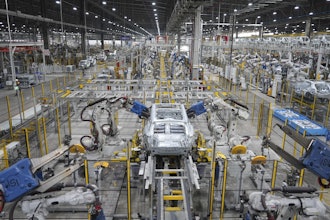
Recently-completed 2017 marked a turning point in manufacturing, and more specifically after-sales service. The year brought a number of social, economic, technological and demographic shifts. Emerging technologies like IoT rose to prominence, and all of these changes combined are making manufacturing an even more interesting sector moving into 2018.
With the new year underway, there is no better time for manufacturers to reflect and determine goals and strategies for the coming months. The three points outlined below provide are significant areas of opportunity that manufacturers need to start thinking about today:
Service becomes the ‘product’
For the past decade, unpredictability in new equipment orders and declining or flat margins have caused many OEMs to consider business models that focus on new ways to generate revenue and profits. The most forward-thinking manufacturers are identifying new areas of opportunity and realizing that after-sales service provides significant financial value.
According to McKinsey & Company, more than 15 percent of OEMs’ total revenue come from parts and services, while a Bain & Co. report suggested that service has an average gross margin of 39 percent. So as product-based revenues decline or remain flat — and margins diminish in key verticals like automotive, aerospace and heavy equipment — after-sales service margins remain strong and attractive during these changing times.
And with this shift in focus to after-sales service, 2018 could be the breakout year for a shift to a subscription-based product uptime model, moving away from a transactional, break-fix method.
In today’s changing world, product advancements alone aren’t enough for manufacturers to sustain the competitive edge necessary to guarantee long-term financial success. Moving to a service-led growth strategy will require OEMs to embrace innovation, modern tools and strategies to revolutionize their after-sales service businesses.
Emerging technology booms
Emerging technologies are driving the Fourth Industrial Revolution. And manufacturers who adopt these technologies will be the ones who reap the most benefits — especially as the industry becomes more centered on product uptime. For example, with the advent of “smart parts” and other IoT-based solutions, manufacturers can monitor machinery and part performance in real-time. This results in earlier detection of equipment malfunctions so OEMs can perform preemptive maintenance and have the necessary resources in place before a part completely fails.
AI and machine learning are other areas of emerging technology that will alter the manufacturing category, removing much of the manual labor and guesswork associated with crunching machine performance data. Further, wearable technology — which grew by 17 percent this year – could prove to be a pivotal asset for service technicians, delivering greater access to troubleshooting materials, while making service calls through devices like smart glasses.
The cloud continues to become the SCM standard
Large durable goods manufacturers have been slow to adopt cloud technologies. Yet cloud computing will be worth more than $8 billion by 2021. To break new ground and cope with the modern uptime era, manufacturers need to shift away from familiar methods of managing their operations to more advanced and innovative solutions based on the cloud.
Excel spreadsheets may have worked for service parts pricing and inventory management in years past. But with increased consolidation and competition omnipresent within the manufacturing space, it’s never been more important to have solutions that can adapt to the ideal price, and where specific parts are needed. Also, in a time where business intelligence decisions are made in real-time, any silos that exist are detrimental to performance and business success. Cloud-based solutions eliminate these barriers, allowing a free flow of data between departments with little-to-no latency. Cloud solutions allow manufacturers to reach a new level of efficiency and performance that could mean the difference between retaining and losing key competitive edges. So, expect to see an increased proliferation of cloud technology throughout the space.
 Gary Brooks, Chief Marketing Officer at Syncron
Gary Brooks, Chief Marketing Officer at SyncronLooking ahead, expect service to play a larger — and new — role, technology to keep growing and the cloud to continue revolutionizing the space. And if manufacturing companies want to succeed in the new year and beyond, following these specific areas closely is a good place to start.
Gary Brooks joined Syncron in 2015 as Chief Marketing Officer. With 20 years of marketing experience, Brooks is a revenue focused B2B marketing executive who believes in qualitative work with quantitative results to deliver breakthrough revenue performance.






















